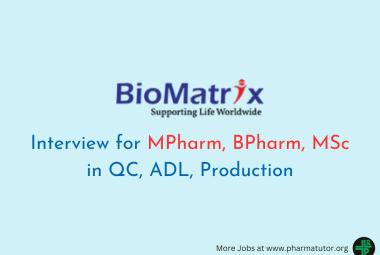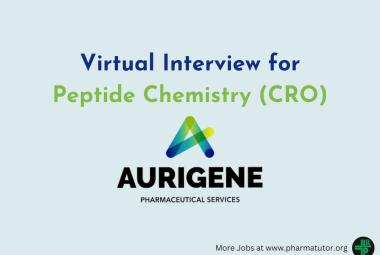{ DOWNLOAD AS PDF }
ABOUT AUTHORS
Israt Jahan Bulbul*, Khadiza-tul-Kubra, Mohita Chowdhury Shimu
Department of Pharmacy,
Southeast University Banani, Dhaka, Bangladesh
*israt_jahanb872@yahoo.com
ABSTRACT
The main aim of this study was to find out the antibacterial, cytotoxic and antioxidant activities of n-hexane, chloroform and ethyl acetate extracts of T. cucumerina (Cucurbitaceae). Disc diffusion technique was used for in vitro anbacterial screening against gram positive, gram negative human pathogenic bacteria. Here kanamycin disc (30 mg/disc) was used as standard. The chloroform and the n-hexane extract of T. cucumerina showed moderate antibacterial activity with the average zone of inhibition 7-13 mm and 7-9 mm respectively. The brine shrimp lethality bioassay method was used to determine the cytotoxic activity and vincristine sulphate was used as positive control. Among the extractives the chloroform soluble fraction demonstrated the highest cytotoxic activity with LC50 17.09 µg/ml which indicates the compounds present in the chloroform extract are promisingly cytotoxic. Antioxidant activity test of the crude extracts were assessed by means of DPPH free radical scavenging method where ascorbic acid was used as standard. The ethyl acetate fraction of T. cucumerina showed strongest antioxidant activity with IC50 value of 52.18 µg/ml.Incase of phenolic content, the n-hexane, chloroform and ethyl acetate extracts of T. cucumerina revealed 18.79, 31.33 and 29.04 mg of GAE / gm of extractives, respectively.
INTRODUCTION
Trichosanthes cucumerina var. anguina (L.) (Cucurbitaceae) is a tropical or subtropical vine, raised for its strikingly long fruit, used as a vegetable, medicine, and a lesser known use, crafting didgeridoos. Common names include snake gourd[1]. T. cucumerina is highly constituted with proteins, fat, fiber, carbohydrates, vitamin A and E, total phenolics and flavonoids[2]. The predominant mineral elements are potassium, phosphorus, sodium, magnesium and zinc[3]. The triterpenes found are 23, 24-dihydrocucurbitacin D, 23, 24-dihydrocucurbitacin B, cucurbitacin B, 3β-hydroxyolean- 13(18)-en-28-oic acid, 3-oxo-olean-13(18)-en-30-oic acid and the sterol 3-O-β-D-glucopyranosyl-24ξ-ethylcholest-7, 22-dien-3β-ol[4]. α- carotene, β- carotene, ascorbic acid, lycopene are also found in it[5]. A novel isoflavone glucoside, 5, 6,6'-trimethoxy-3',4'-methylenedioxyisoflavone 7-O-beta-D-(2''-O-p coumaroylglucopyranoside) has been characterized from the seeds of Trichosanthes[6].
Decoctions of leaves and stems are used in the treatment of bilious disorders, skin diseases, cardiac tonic and emmenagogue. Ripe fruits possess purgative, anthelmintic and emetic properties. They improve appetite and cure biliousness. Seeds and root are used for the expulsion of intestinal worms and in the treatment of diarrhea and syphilis[7]. The petroleum ether extract of the seeds have been found to possess appreciable antibacterial activity[8]. Hot aqueous extract of root tubers of T. cucumerina have significant anti-inflammatory activity[9], the root and the fruit juice extract of T. cucumerina has cytotoxicity[10].
T. cucumerinashowed significant blood glucose lowering activity[11][12][13], moderate larvicidal effects[14], good hepatoprotective activity[15], antihistamine activity[12], dose dependent gastroprotective effects[12].
The objective of the present study was to investigate the antibacterial, cytotoxic and antioxidant activity of the different fractions of T. cucumerina. Therefore, systematic research with medicinal plants may open the door of many therapeutic choices.
MATERIALS AND METHODS
Plant material
The leaves of the plant T. cucumerina were collected during the month of July 2010 from the area of Moynertak, Tongi, Dhaka.
Plant materials extraction and fractionation
The fresh leaf was collected, sun dried for seven days and ground. The dried powder of T. cucumerina leaf (200 gm) was soaked in 600 ml of ethanol for 7 days and filtered through a cotton plug followed by Whatman filter paper number 1. The concentrated ethanolic extract of leaf was fractionated by the modified Kupchan partitioning method[16] into n-hexane, chloroform and ethyl acetate. The subsequent evaporation of solvents afforded n-hexane (450 mg), chloroform (700 mg) and ethyl acetate (350 mg) from leaf extract.
Antibacterial assay
In our present study, the antibacterial activity of n-hexane, chloroform and ethyl acetate fractions of the plant were investigated in comparison with standard kanamycin (30 μg/ disc) against a number of pathogenic Gram-positive (Bacillus megaterium, Bacillus subtilis, Staphylococcus aureus and Sarcina lutea) and Gram- negative (Salmonella paratyphi, S. typhi, Vibrio parahaemolyticus, V. mimicus, Escherichia coli, Shigella dysenteriae, S. boydii and Pseudomonas aeruginosa) bacteria. The microorganisms were collected as pure cultures from the Institute of Nutrition and Food Science (INFS), University of Dhaka, Bangladesh. The sample solution of the material to be tested was prepared by dissolving a definite amount of material in methanol to attain a concentration of 50 mg/ml. 10 μl of such solution was applied on sterile disc (5 mm diameter, filter paper) and allowed to dry off the solvent in an aseptic hood. Thus, such discs contain 500 μg of crude extracts. To compare the activity with standard antibiotics, Kanamycin (30 μg/disc) was used.
Cytotoxicity Screening
Brine shrimp Lethality Bioassay
Brine shrimp lethality bioassay[17] [18]was used for probable cytotoxic activity. The eggs of Brine Shrimp (Artemia salina ) was collected from local pet shops and hatchedin a tank at a temperature around 37 ºC with constant oxygen supply. Two days were allowed to hatch and maturethe nauplii. Stock solution of the sample was prepared bydissolving required amount of extract in specific volume of pure dimethyl sulfoxide (DMSO) to attain concentrations of 5, 10, 20, 40 and 80 mg/ml. With the help of apasteur pipette nauplii were exposed to different concentrationsof the extracts.
DPPH radical scavenging activity
Antioxidant activity of n-hexane, chloroform and ethyl acetate of leaf extracts of T. cucumerina was determined on the basis of their scavenging potential of the stable DPPH free radical in both qualitative and quantitative assay.
Qualitative analysis
A suitably diluted stock solutions were spotted on precoatedsilica gel TLC plates and the plates were developedin solvent systems of different polarities (polar, mediumpolar and non-polar) to resolve polar and non-polarcomponents of the extracts. The plates were dried at roomtemperature and were sprayed with 0.02% DPPH inmethanol. Bleaching of DPPH by the resolved band wasobserved for 10 minutes and the color changes (yellow onpurple background) were noted[19].
Quantitative analysis
The free radical scavenging activities (antioxidant capacity)of the plant extracts on the stable radical 1, 1-diphenyl-2-picrylhydrazyl (DPPH) were estimated by the method ofBrand-Williams[20]. During this experiment the testsamples of n-hexane, chloroform and ethyl acetate extractsof T. cucumerina at different concentrations were mixed with3.0 ml of DPPH methanol solution. The antioxidant potential was assayed from the bleaching of purple colored methanol solution of DPPH radical by the plant extracts as compared to that of ascorbic acid by UV spectrophotometer (UV–1501PC SHIMADZU, Japan) at 517 nm. Ascorbicacid was used as a positive control. Percent scavenging of the DPPH free radical was measured using the following equation-
% DPPH radical scavenging = [1 – (As/ Ac)] × 100
Here, Ac = absorbance of control, As = absorbance of sample solution.
Then % inhibitions were plotted against respective concentrations used and from the graph IC 50 was calculated. The lower IC50 indicates higher radical scavenging activity and vice versa.
Assay for Total Phenolics
Total phenolic content of different parts of T. cucumerinaextractives was measured employing the method as described by Skerget et al., 2005[21] involving Folin-Ciocalteu reagent as oxidizing agent and gallic acid as standard[22]. 0.5 ml of diluted plant extract and standard of different concentrations solution were taken in the test tube followed by adding 2.5 ml of Folin–ciocalteu (Diluted 10 fold with water) & 2 ml of Sodium carbonate (1 M) respectively. Solutions were then incubated for 20 minutes at 45ºC in the water bath. The absorbance was measured colorimetrically at 760 nm to determine the total phenol contents by using standard curve prepared (Fig:1) from gallic acid solution with different concentration.
RESULTS AND DISCUSSION
Antibacterial activity
Different extractives of T. cucumerinawere screened against human pathogenic organisms to evaluate antibacterial activities by disc diffusion method. The chloroform fraction possesses the zone of inhibition value ranged from 7-13 mm (Table: 1). Among different fractions tested, chloroform fraction of the plant exhibited moderate inhibitory activity followed by n-hexane fraction (7-9 mm) whereas ethyl acetate fraction showed little or no activity on the tested microorganisms. The most sensitivity was observed in P. aeruginosa (13 mm), S. paratyphi (11 mm) and V. parahaemolyticus (10 mm) by chloroform fraction of the plant.
Cytotoxicity screening
LC50 value of chloroform, n-hexane and ethyl acetate fractions found with the value of 17.09 μg/ml, 27.72 μg/ml and 44.71 μg/ml respectively in comparison with vincristine sulphate as standard whose LC50 value 8.844 μg/ml. Among them chloroform fraction of the plant exhibited the potent cytotoxic activity.
DPPH radical scavenging activity
Qualitative assay
The color changes (yellow on purple background) on the TLC plates were observed due to the bleaching of DPPH by the resolved bands.
Quantitative assay
n-hexane, chloroform, ethyl acetate extracts of the plant showed significant antioxidant activity with the IC50 value of 65.84μg/ml, 59.01μg/ml, 52.18μg/ ml respectively compared with the standard ascorbic acid with IC50 value of 45.47 µg/ml ( Fig: 2), the fractions exhibited a concentration dependant DPPH radical scavenging activity.
Total phenolic content
The phenolic content of plant fractions was determined using the Folin–Ciocalteu assay and was expressed as gallic acid equivalents (GAE). The phenolic contents of n-Hexane, chloroform and ethyl acetate soluble fractions of T. cucumerinaplant were 18.79 mg/g, 29.04 mg/g and 31.33 mg/g of the dry weight.
CONCLUSION
The present study indicates that the n-hexane, chloroform and ethyl acetate extracts of the different fractions of T. cucumerinaexhibited mild to moderate antibacterial, profound antioxidant, total phenolic content and cytotoxic activities. The chloroform extract of the plant showed moderate antibacterial activity. So, the studied plant may have clinical and therapeutic proposition in the most life threaten diseases like tumor or cancer, various infectious diseases and the aging process of human being. Therefore, further investigation should be necessary for the development of novel lead compound.
Table 1: In vitro antibacterial activity of the extracts of T. cucumerina (leaves) and kanamycin discs.
|
Test organism |
Diameter of zone of inhibition |
|||
|
n-Hexane extract (500µg/disc) |
Chloroform extract (500µg/disc) |
Ethyl acetate extract (500µg/disc) |
Kanamycin(30µg/ disc) |
|
|
Gram positive bacteria |
||||
|
B. subtilis |
8 |
8 |
0 |
24 |
|
B. megaterium |
8 |
8 |
0 |
25 |
|
S. aureus |
7 |
7 |
0 |
10 |
|
S. lutea |
7 |
7 |
0 |
14 |
|
Gram negative bacteria |
||||
|
V. mimicus |
9 |
8 |
7 |
29 |
|
S. boydii |
7 |
9 |
7 |
31 |
|
P. aeruginosa |
9 |
13 |
0 |
32 |
|
S. typhi |
8 |
8 |
0 |
32 |
|
S. paratyphi |
8 |
11 |
0 |
29 |
|
V. parahaemolyticus |
8 |
10 |
0 |
30 |
|
S. dysenteriae |
0 |
7 |
0 |
9 |
|
E. coli |
7 |
8 |
0 |
17 |
REFERENCES
1. Saboo Shweta S , Thorat Priyanka, Tapadiya Ganesh G, Khadabadi S S, Distribution and Ancient-recent Medicinal Uses of Trichosanthes species, International Journal of Phytopharmacy, Jul-Aug 2012, Vol. 2 (4), pp.91-97
2. Adebooye OC, Phytoconstituents and anti-oxidant activity of the pulp of snake tomato (Tricosanthes cucumerina), African Journal of Traditional, Complimentary and Alternative Medicines, 2008, 5 (2), 173-179.
3. Ojiako OA, Igwe CU, The Nutritive, Anti-Nutritive and Hepatotoxic Properties of Trichosanthes anguina (Snake Tomato) Fruits from Nigeria, Pakistan Journal of Nutrition, 2008, 7 (1), 85-89.
4. Jiratchariyakul W, Frahm AW, Cucurbitacin B and dihydrocucurbilacin B from Trichosanthes cucumerina, J. Pharm. Sci., 1992, 19 (5), 12.
5. Swamy MJ, Komath SS, Nadimpalli SK, Identification of histidine residues in the sugar binding site of snake gourd (Trichosanthes anguina) seed lectin, Biochem Mol Biol Int, 1998, 44(1), 107-16.
6. Yadava RN, Syeda Y, An isoflavone glycoside from the seeds of Trichosanthes anguina, Phytochemistry, 1994, 36(6), 1519-21.
7. Yusuf, M; Chowdhury, J.U.; Wahab, M.A.; & Begum,J; 1994, Medicinal Plants of Bangladesh, BCSIR, Dhaka.
8. Hariti M, Rathee PS, Antibacterial activity of the unsaponifiable fraction of the fixed oil of Trichosanthes seeds. Asian journal of chemistry, 1995; 7 (4): 909=911.
9. Kolte RM, Bisan VV, Jangde CR, Bhalerao AA, Anti-inflammatory activity of root tubers of Trichosanthes cucumerina (LINN) in mouse's hind paw oedema induced by carrageenin, Indian Journal of Indigeneous Medicines, 1997, 18(2), 117-21.
10. Kongtun S, Jiratchariyakul W, Mongkarndi P, Theppeang K, Sethajintanin I, Jaridasem S, Frahm AW. Thai, Cytotoxic properties of root extract and fruit juice of tricosanthes cucumerina, J Phytopharm, 1999, 6 (2), 1-9.
11. Kar A, Choudhury BK, Bandyopadhyay NG,Comparative evaluation of hypoglycaemic activity of some Indian plants in alloxan diabetis rats, Journal of Ethnopharmacology, 2003, 84(1), 105-108.
12. Arawwawala M , Thabrew I, Arambewela L,Antidiabetic activity of Trichosanthes cucumerina in normal and streptozotocin–induced diabetic rats; International Journal of Biological and Chemical Sciences, 2009, 3(2), 56
13. Kirana H, Srinivasan B,Tricosanthes cucumerina improves glucose tolerance and tissue glycogen in non insulin dependent diabetis mellitus induced rats, Indian Journal of Pharmacology, 2008, 345-8.
14. Rahuman AA, Venkatesan P, Larvicidal efficacy of five cucurbitaceous plant leaf extracts against mosquito species, J. of Parasitol Res, 2008, 103(1), 133-9.
15. Kumar, S. S.; Kumar, B. R. & Mohan G.K. (2009). Hepatoprotective effect of Trichosanthes cucumerina Var cucumerina L. on carbon tetrachloride induced liver damage in rats. Journal of Ethnopharmacology, 2009, 123(2):347-50, ISSN 0378-8741
16. Van Wagenen, B.C., R. Larsen, J.H. Cardellina, D. Ran dazzo, Z.C. Lidert and C. Swithenbank,. Ulosantoin, a potent insecticide from the sponge Ulosa ruetzleri. J Org Chem. 1993; 58, 335-337.
17. Meyer, B.N., N.R. Ferrigni, J.E. Putnam, L.B. Jacobsen, D.E. Nichols and J.L. Mclaughlin. Brine shrimp: a convenient general bioassay for the active plant constituents. Planta Medicine, 1982; 45(5): 31-34.
18. Zhao, G.X., Y.-H. Hui, J.K. Rupprecht, J.L. McLaughlin, and K.V. Wood, "Additional bioactive compounds and trilobacin, a novel highly cytotoxic acetogenin, from the bark of Asimina triloba," Journal of Natural Products, 1992; 55(3), 347-356.
19. Sadhu, S. K.; E. Okuyama, H. Fujimoto and M. Ishibashi, 2003."Separation of Leucas aspera, a medicinal plant of Bangladesh, guided by prostaglandin inhibitory and antioxidant activities" Chemical & Pharmaceutical Bulletin 51, pp.595-598.
20. Brand-Williams W, Cuvelier ME, Berset C. Use of free radical method to evaluate antioxidant activity. Lebensm Wiss Technology 1995; 28:25-30
21. Skerget, M., Kotnik, P., Hadolin, M., Hras, A. R., Simonic, M. and Knez, Z. 2005. Phenols,proanthocyanidins, flavones and flavonols in some plant materials and their antioxidant activities. Food Chem.89, 191-198.
22. Majhenic L, kerget MS, et Knez Z. Antioxidant and antimicrobial activity of guarana seed extracts. Food Chem, 2007; 104:1258-1268.
REFERENCE ID: PHARMATUTOR-ART-2385
|
PharmaTutor (Print-ISSN: 2394 - 6679; e-ISSN: 2347 - 7881) Volume 4, Issue 1 Received On: 02/09/2015; Accepted On: 07/09/2015; Published On: 01/01/2016 How to cite this article: Bulbul IJ, Kubra KT, Shimu MC; Antibacterial, Cytotoxic and Antioxidant Activities of n-Hexane, Chloroform and Ethyl Acetate extracts of Trichosanthes cucumerina leaves; PharmaTutor; 2016; 4(1); 42-46 |
NOW YOU CAN ALSO PUBLISH YOUR ARTICLE ONLINE.
SUBMIT YOUR ARTICLE/PROJECT AT editor-in-chief@pharmatutor.org
Subscribe to Pharmatutor Alerts by Email
FIND OUT MORE ARTICLES AT OUR DATABASE









